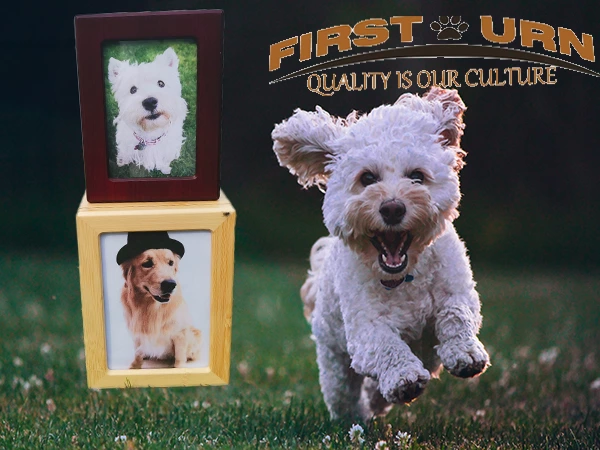The Truth about Pet Ashes: Color, Safety, and Storage -Choose the Perfect Memorial for Your Beloved Companion
Highly Key Point
-Pet ashes are usually powdered, and the color varies depending on a variety of factors
-The ashes themselves do not carry germs, and the cremation process eliminates potential risks
-Choosing the right urn is essential for long-term preservation and commemoration
Are ashes powdery?
Yes, pet ashes are usually powdery. During the cremation process, the high temperature will completely burn the organic substances in the remains, leaving mainly inorganic substances. After these inorganic substances are treated, they will form a delicate powdery substance, which is what we call ashes. Choosing the right funeral urn for ashes is essential for the proper preservation of these precious ashes.

What color are ashes?
The color of pet ashes is not uniform. They usually range in color from off-white to dark grey, and sometimes light brown or beige. The color of the ashes depends on a number of factors, including the pet's size and age, and the temperature during cremation. Understanding the color characteristics of ashes can help us to make better choices when selecting funeral urns.
Here warmth sharing
**Here are some specific factors affecting the color of pet ashes:
1. Pet size: Larger pets usually produce more ashes and may be darker in color.
2. Pet's age: The bone density of older pets may affect the color of the ashes.
3. Cremation temperature: Higher temperatures may cause the ashes to be lighter in color.
4. Pet eating habits: Long-term diet may affect the mineral composition of bones, which in turn affects the color of ashes.
5. Other substances in the cremation process: If any additional substances (such as collars) are cremated together, it may affect the final color of the ashes.
Did my baby die of illness, do the ashes carry germs?
The answer is of course no!
Long-lasting combustion at 2000℃ can only be achieved by professional equipment, not something that can be done by a few buckets of gasoline. The modern crematorium is a complex machine that combines electrical systems, mechanical transmission systems, and gas systems. We need to constantly adjust the pressure and oxygen supply in the furnace to ensure that the pet's body is fully burned and that the exhaust gas meets emission standards.
After such high-temperature incineration, all bacteria and viruses have been killed, leaving the purest ashes. So you don't have to worry about babies and the elderly at home, your baby's ashes are clean and safe.
Assuming my pet died with an illness, do the ashes carry germs?
But my pet was cremated at 2000 degrees Celsius, the germs were long deactivated!!
Yes, you're right. High temperatures of 2000 degrees Celsius can effectively kill all germs, including rabies virus, toxoplasma, etc. Therefore, you can rest assured that your pet's ashes will not carry germs.
According to the recommendations of the Centers for Disease Control and Prevention (CDC), pet ashes cremated at temperatures above 1800 degrees Celsius for at least 30 minutes can effectively kill germs. Therefore, your pet was cremated at a high temperature of 2000 degrees Celsius, and the germs were long deactivated.
Of course, for safety's sake, you can consult your local veterinarian or professional pet cremation service agency. They can provide more professional advice based on your specific situation.
This is particularly important when choosing a keepsake cremation urn. Knowing that the ashes are safe means you can display them at home as a permanent memorial to your pet.
How should we deal with the ashes?
After losing a beloved pet, how to deal with their ashes is an emotional and personal decision. Here are some suggestions:
1. Choose the right urn: funeral home urns offers a variety of options, from traditional to modern designs. elect an urn that reflects your pet's unique character.
2. look find a memorial space in home house: set up a special corner in your home to place urns and pet photos, toys, etc. as a warm memorial space.
3. Spreading ashes: If your pet likes a certain place very much during his lifetime, you can consider spreading some of the ashes there. Please pay attention to compliance with local regulations.








